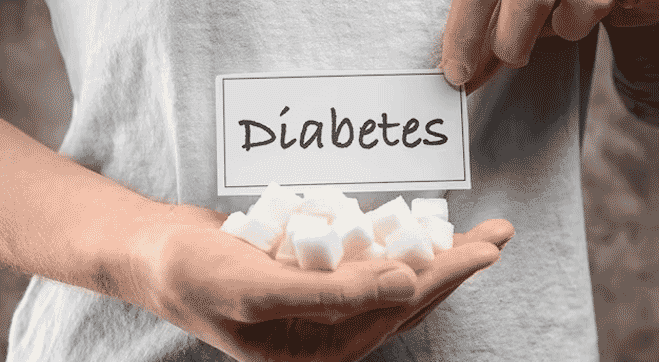What is the main cause of diabetes?
Even in ancient times, between 400 AD to 500 AD, Indian physicians and surgeons
knew that there are at least two types of diabetes
. Madhumeha it was called,
meaning “honey urine” since the urine
of diabetic patients attracted ants.
For three millennia, descriptions of diabetes have been recorded in various civilizations,
from Egypt and Persia to Ancient Greece. The Canon of Medicine written around 1000
AD described the unusual appetite and the development of gangrene in diabetics.
While the term “diabetes” was coined in the first century A.D. by Aretaeus the Cappadocian,
mellitus’ was first used by a British Surgeon in 1798 meaning “sweet” to distinguish it
from the other type of diabetes “insipidus” which means “with no taste”.
Most of these descriptions had one thing in common, that diabetes was a
diseases
characterized by excessive production of urine.
Diabetes Mellitus (DM) Diabetes is any disease characterized by excessive production of urine. Diabetes mellitus in particular, is a Metabolic disorder associated with chronically elevated blood sugar and insulin , with excessive urine production being one of its symptoms. As per the WHO, 8.7% of all Indians are diabetic. In 2017, diabetes wa the 7″ leading cause of death worldwide.
Most types of diabetes mellitus have common symptoms which include:
– Extreme thirst
– Frequent urination (especially at night)
– Muscle pains
– Weakness and dizziness
– Cracked skin
– Extreme hunger
– Vision changes
Diabetes originates from defects in either the
secretion of insulin by pancreas or response to insulin by other
cells, or both. The level of glucose in the blood is regulated by insulin
and another pancreatic enzyme called glucagon. These enzymes work in
tandem to control how much of the blood sugar should remain in circulation
and how much enters tissues like skeletal muscle. Any dysfunction in insulin
production by the pancreas or response to it by other cells leads to high
levels of glucose remaining in the blood. High concentration of blood glucose
begins to affect nerves and blood vessels causing a host of
complications in the body.
In addition to high blood glucose levels, diabetics also suffer from poor metabolism of carbohydrates, lipid s and proteins . These metabolic abnormalities also arise because insulin is either too low in the blood to cause any effect, or tissues like skeletal muscle, fat tissue and liver cells become unresponsive to normal levels of insulin. Based on the type and duration of diabetes, the severity of symptoms may vary. For example, type 2 diabetes initially remains asymptomatic. However, uncontrolled and advanced diabetes may have dire consequences like cardiovascular diseases, diabetic neuropathy, nephropathy, and retinopathy, coma, ketoacidosis and even death.
What are the two different types of diabetes mellitus?
Understanding the cause of diabetes in each type can assist
in application of preventive measures to manage consequences and delay the onset of
diabetes, especially type 2 which has reached epidemic proportions all over the world.
It is believed that as
many as 50% of people who have diabetes do not know it and are undiagnosed.
Most patients with DM have either type 1 (insulindependent DM) or type 2 (non-insulin dependent DM). However, there are also other lesser-known types of diabetes including type 3, gestational diabetes, LADA, MODY, and Brittle diabetes.
What is Type 2 or Insulin Independent Diabetes Mellitus?
Type 2 Diabetes Mellitus (T2DM) is the most common type of diabetes,
contributing to 90% to 95% of all diabetic cases.” Type 2 Diabetes Mellitus is a heterogeneous
and progressive disorder that arises from a combination
of genetic and environmental factors. Genetic factors include gene loci like
PPARG, CAPN10, KCNJ 11, TCF7L2 which increase the susceptibility to diabetes,
while environmental factors that can lead to Type 2 Diabetes Mellitus are physical inactivity,
poor and excessive nutrition, ageing, all of which increase body fat.
” However, many overweight people do not develop diabetes until
much later in life when they grow older.
How does type 2 diabetes develop over time?
Type 2 diabetes begins with the development of insulin
resistance in the body and dysfunction of the beta cells of lipase
,
and the major causes that lead to the development of Type 2 Diabetes Mellitus are
obesity and being overweight. This is because high body fat impairs
the activity of pancreatic beta cells and this, along with excessive eating,
cause an increase in the amount of insulin produced. As a result,
insulin resistance begin to develop in body tissues and impairs glucose tolerance.
As tissues begin to develop resistance to increasing quantities of insulin,
there comes a point where the pancreas is unable to produce the high
this stage, the person is said to be diabetic and their blood sugar levels
elevate as insulin fails to function on essential tissues of the body.
The process of diabetes development is also associated with reduced
secretion of the incretin Glucagon-Like Peptide 1 (GLP-1),
elevated glucagon levels, and other hormones which
contribute to insulin resistance, reduced insulin secretion and high
blood sugar in Type 2 Diabetes Mellitus. Thus insulin resistance is the first sign that
indicates further progression to diabetes.
How to Manage and Treat Type 2 Diabetes Mellitus?
Treatment of diabetes requires a combination of drugs at different
stages of the disease along with lifestyle
changes by the patient.
Medications which are used for Type 2 Diabetes Mellitus are oral hypoglycemic drugs,
incretins, insulin, and other oral agents. Lifestyle changes should
primarily be aimed towards weight reduction through consumption
of healthy food
in moderation and increase in exercise and physical activity.
What is Type 1 or Juvenile or Insulin Dependent Diabetes Mellitus?
Type 1 diabetes mellitus (T1DM) is an autoimmune disorder that
occurs due to the destruction of the beta cells of pancreas by the
immune system leading to absolute insulin deficiency.
Type 1 diabetes mellitus is mostly a genetic condition, develops more rapidly and is
commonly seen at younger age (hence its name juvenile diabetes,
although it is now known that it may develop at any age). Most of the
gene variants associated with Type 1 diabetes mellitus are located at the HLA loci,
which carries genes involved in immunity. Some environmental factors
like enterovirus (and other viral) infection, gut microflora composition,
low serum Vitamin D
and toxins may also trigger the disease in patients
who carry the genes for Type 1 diabetes mellitus.
What are the symptoms of Type 1 Diabetes Mellitus?
– Polydipsia, Polyuria, Polyphagia
– Incontinence
– Extreme Tiredness
– Sudden Weight Loss
– Slow-Healing Wounds
– Recurrent Infections
– Blurred Vision
– Severe Dehydration
– Diabetic ketoacidosis
Symptoms in children and adolescents are more severe
as compared to those in adults. People who suffer
from T1DM are also more likely to suffer from other
What is the cellular mechanism for Type I diabetes?
Most of the immune damage to the beta cells of pancreas is T-cell mediated
inflammatory response (insulitis), humoral (B cell) response, as well as macrophages.
Most patients with Type 1 Diabetes have circulating auto-antibodies that can be detected for
diagnosis of T1DM- A512/1A-2, Insulin Autoantibody (IAA) and Glutamic Acid
Decarboxylase (GAD).
In addition, these patients show several characteristics like
i) Presence of immune cells in pancreas
ii) Autoantibodies against islets of pancreas
iii) Dysfunction of T cell mediated immunoregulation
iv) Response to immune therapy
v) Co-morbidity with other autoimmune disorders
In addition to absence of insulin which is produced by beta
cells of pancreas, alpha cells are also affected leading to elevation
of glucagon levels, which is contrary to what occurs during high
blood sugar levels. The effects of insulin deficiency are
thus exacerbated by the metabolic effects of elevated glucagon.
How to Manage and Treat Type 1 Diabetes Mellitus?
Detection of circulating autoantibodies against insulin,
glutamic acid decarboxylase (GAD) and other proteins can be done for the diagnosis
of type 1 diabetes. The greater the number of autoantibodies, the higher the risk.
The diagnosis of T1DM is confirmed if at least two types of autoantibodies are
found positive in the sample.
Since patients with T1DM suffer from absolute insulin deficiency, treatment involves lifelong insulin therapy to avoid the fatal complications of hyperglycemia.analogues. Children that develop T1DM have to learn using insulin injections, blood glucose monitoring, basic nutrition planning and detection, and treatment of hypoglycemia which may occur if insulin is overadministered due to miscalculations.
What is Gestational Diabetes?
Gestational diabetes (GD) (Diabetes during Pregnancy) occurs during pregnancy and is characterized
by blood glucose levels higher than normal but not high enough to
be considered diagnostic of diabetes. GD increases the risk of
pregnancy complications. Both insulin resistance and impairment of beta cell of
pancreas lead to the development of GD, characterized by impaired glucose sensitivity.
GD is most commonly noted in the 2″ trimester and is associated with significant
maternal and fetal morbidity. Hyperglycemia during pregnancy is responsible for
the increased risk for larger babies based on gestational age, preeclampsia, preterm
birth and cesarean delivery due to large babies.
How does gestational diabetes develop?
Pregnancy causes changes in the levels of a many
placental hormones
namely, human placental lactogen, progesterone
,
cortisol
, growth hormone and prolactin
. These hormones can act on insulin
receptors and cause the development of insulin resistance. This is
accompanied by deterioration of beta cells of pancreas, which prevents
the compensation of insulin receptor defects by increased production of insulin.
In some cases, as much as 67% of beta cell function is lost.
How to Manage and Treat gestational diabetes?
(a) Glucose monitoring-especially self-monitoring
is essential to reduce perinatal morbidity.
(b) Medical nutrition therapy (MNT) and exercise following a healthy diet
with adequate calories for normal weight gain in the mother while
maintaining normal blood glucose levels.
(c) Insulin therapy- can be done when glucose levels
are not controlled by MNT.
(d) Oral medication- metformin and glyburide are
commonly used.
(e) Obstetrical management- regular check-up of fetal
Health
.
Other Types of Diabetes
What is Type 3 Diabetes Mellitus?
Type 3 Diabetes Mellitus is a neuroendocrine disorder
commonly known as Alzheimer’s disease that arises from Type 3 Diabetes Mellitus.
Evidence points towards Type 2 Diabetes Mellitus and Type 1 Diabetes Mellitus contributing to
pathogenesis of Alzheimer’s disease (AD), with 2 fold resistance and insulin deficiency seen in Type 2 Diabetes Mellitus are both believed to
be mediators of the neurodegeneration seen in Alzheimer’s. Hence,
Type 3 Diabetes Mellitus is also being considered as a type of diabetes which is largely
associated with brain tissue.
What is Monogenic Diabetes?
Monogenic diabetes arise from defect in a single gene which can be inherited
or may develop spontaneously. These mutations affect the body’s
ability to produce sufficient insulin. NDM occurs in newborns while
MODY first presents in adolescence. In some cases of MODY,
the mutations may cause slightly higher blood sugar levels that
remain stable throughout life, with mild or no symptoms.
These individuals may not develop any long-term complications.
In other cases, insulin therapy and oral hypoglycemic drugs may
be required. Monogenic diabetes are often confused for T2DM,
but it can be identified by the absence of obesity
as risk factor,
presence of strong family history and younger age at time of onset;
diagnosis can be done by gene testing.
What is Brittle Diabetes?
A condition characterized by severe instability of
blood glucose concentration, with frequent episodes of hypoglycemia
and ketoacidosis. It usually occurs in younger women with T1DM and
is triggered by stressful situations.” It has a poorer prognosis,
frequently causing hospitalization. Brittle diabetes is associated
with increased complication risks like microvascular and pregnancy
complications and shortened life expectancy.
What is Latent Autoimmune Diabetes of Adulthood?
Similar to Type 1 Diabetes Mellitus, Latent Autoimmune Diabetes of Adulthood is a type of autoimmune diabetes in which immune cells destroy
the beta cells of pancreas, causing insulin deficiency.
However, unlike Type 1 Diabetes Mellitus, its onset occurs in adulthood,
because the body is able to produce its own insulin for many
years until it slows down and stops due to autoimmune attacks.
Latent Autoimmune Diabetes of Adulthood usually occurs over the age of 30 and is believed to be a
subtype of Type 1 Diabetes Mellitus. It is initially manageable by diet and exercise,
but later requires insulin therapy.
Diabetes is much more than a disease that is (wrongly) believed to occur when you eat too much sweet. It is a complex set of conditions that affect the lives of people with dangerous complications if it is not monitored and kept in control. With the many subtypes of diabetes having similar symptoms, it is easy to misidentify one as the other. Awareness about the different types of diabetes is therefore essential for accurate and early identification and treatment.








